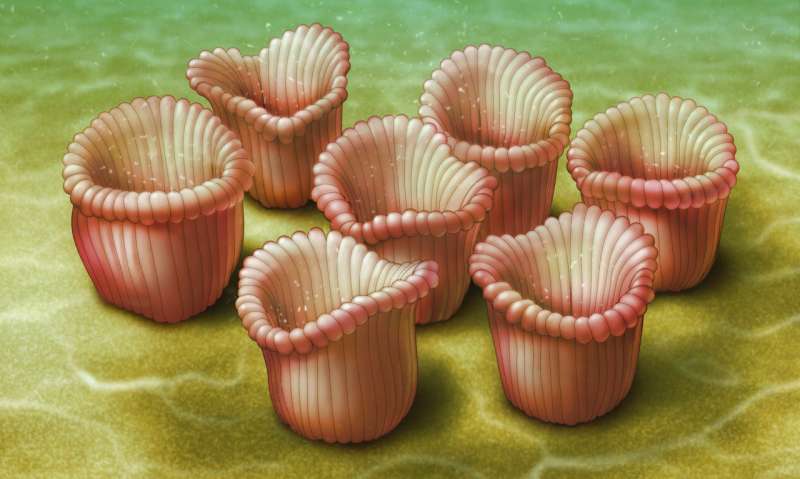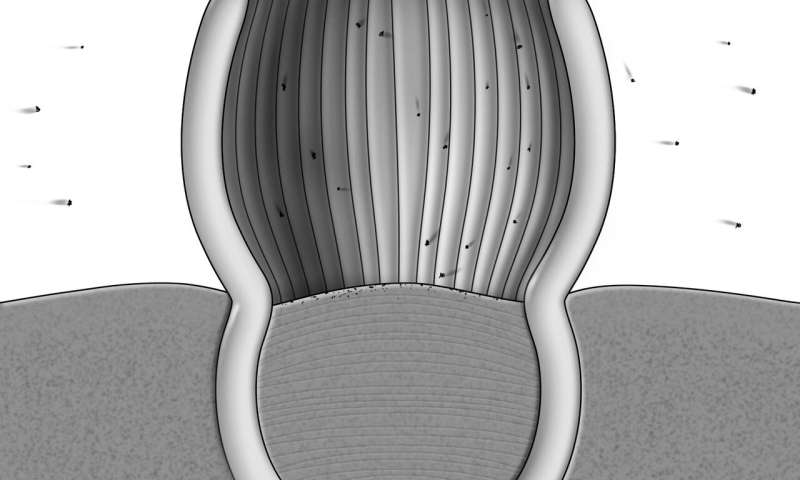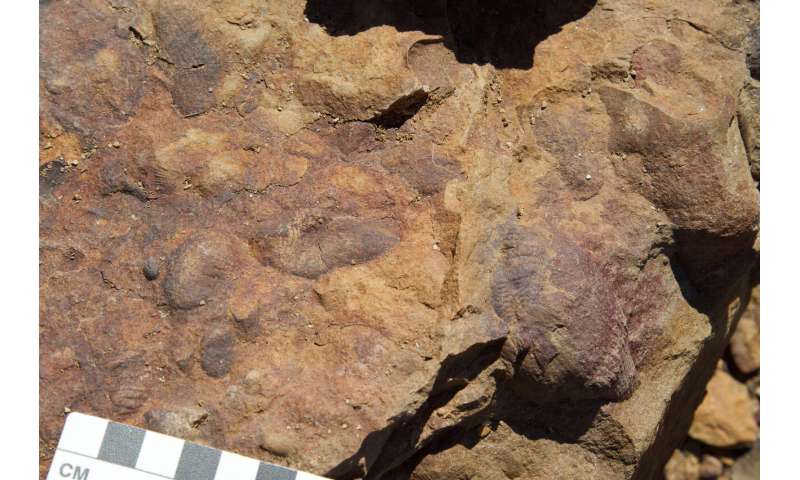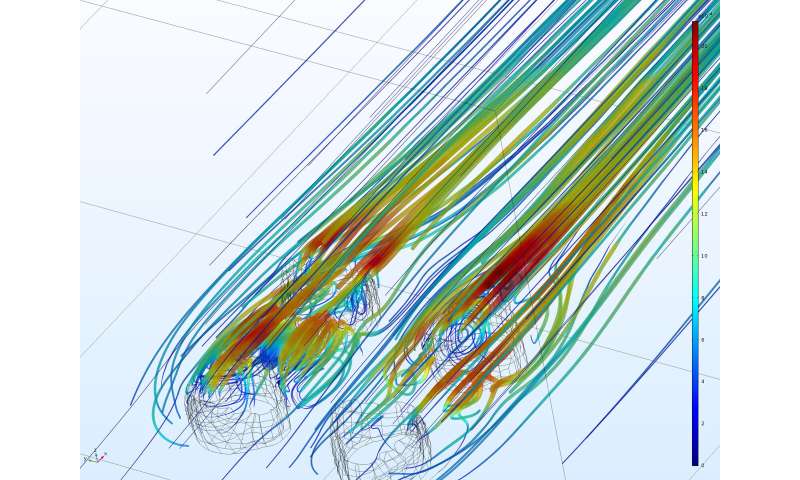Ediacaran dinner party featured plenty to eat, adequate sanitation, computer model shows

Earth's first dinner party wasn't impressive, just a bunch of soft-bodied Ediacaran organisms sunk into sediment on the ocean floor, sharing in scraps of organic matter suspended in the water around them.
But sorting out the way the 570-540-million-year-old, enigmatic creatures ate supports the argument that they behaved like more modern-looking animals and evolved into shapes that helped them feed.
Paleontologist Simon A.F. Darroch, assistant professor of earth and environmental sciences at Vanderbilt University, and Brandt M. Gibson, a Ph.D. student, developed a series of computational fluid dynamics simulations demonstrating that not only were some of the Ediacara biota suspension feeders, trapping nutrients in deep cavities, but that they oriented themselves within flow currents to amplify eddies as water moved around them. That meant more food being sent into each creature's cavity.
"They were enhancing the amount of nutrients going from individual to individual, and they were also exporting waste down-current and away from the one making it," Gibson said. "So it was a good dinner party in that they got to eat a lot and didn't have to sit in their own waste."
The research is outlined in a paper titled "Gregarious suspension feeding in a modular Ediacaran organism" that appears June 19 in the journal Science Advances.
The team used fossil evidence gathered near Bethanie, Namibia, and plans to return to the African nation this summer to study and photograph other samples. Their recent work builds on Darroch's findings last year that Ediacara biota were forming complex communities tens of millions of years before the Cambrian explosion.
-

Artistic reconstruction of a cross section of Ernietta. Note the laminations of sediment within the cavity, and the particles within the surrounding water that settles into the cavity. Credit: Dave Mazierski -

Well preserved Ernietta with bottom suture and individual modules visible. Credit: Charlotte Kenchington -

Turbulent energy flowlines in multi-model CFD simulation showing recirculating turbulent patterns within and downstream of Ernietta cavities. Credit: Dave Mazierski
Because Ediacarans fed similarly to modern sea creatures, the work helps place them on the tree of life, Darroch said.
"For hundreds of years, we've just stared at the fossils themselves and made judgments on what we believe they're related to," he said. "But Brandt is focused on these unusual bizarre shapes and morphologies and said, 'What if these evolved as a way of dealing with life in moving fluids.' One of the reasons things evolve strange shapes is to help them feed.
"They are behaving like animals, and that's a link between them and what we recognize as animals."
More information: B.M. Gibson el al., "Gregarious suspension feeding in a modular Ediacaran organism," Science Advances (2019). advances.sciencemag.org/content/5/6/eaaw0260
Journal information: Science Advances
Provided by Vanderbilt University




















